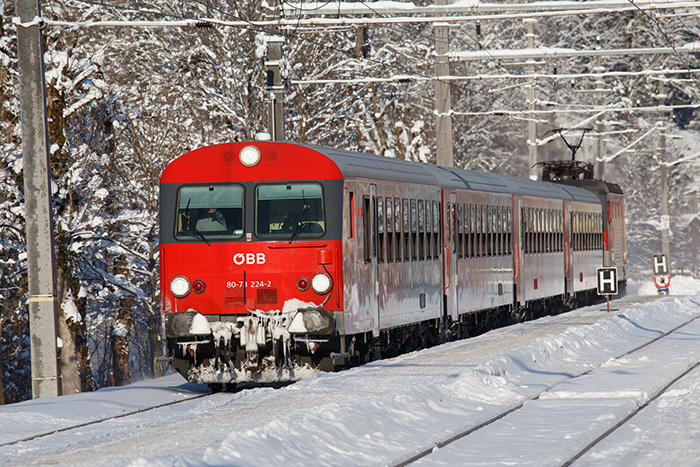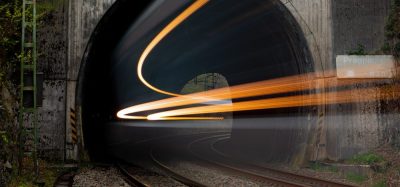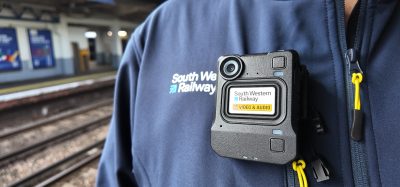ÖBB: The transition to the new digital railway
Posted: 12 February 2018 | Gerald Schinagl | 4 comments
‘Digitalisation’ is a term used a lot within the railway sector, but what does it actually mean and what are its real-world possibilities?
We talk to Gerald Schinagl, Digital Innovation Manager at the ÖBB, who will be speaking at the International Rail Development conference in Brussels on 22-23 May 2018 on what digitalisation means for the Austrian Federal Railway.


When we in the railway sector hear the word ‘digitalisation’, many of us usually fall into some misconceptions. One of the misconceptions is that digitalisation signifies large, disruptive changes like autonomous driving or other hyped technologies (though we will be waiting a long time for a truly significant change in rail digitalisation).
Another misconception is that one only needs to install a CDO and formulate a digitalisation strategy to have a miracle happen and make it work, while many simply believe that the term ‘digitalisation’ is only a new word for IT.
In my session at the International Rail Development conference, I will discuss how we tackle the big topic of digitalisation from different angles that support and depend on each other.
My team at the Austrian Federal Railway, which focusses on digital innovations, will report our learnings, experiences and failures on the following topics:
- Setting up suitable organisational structures for digitalisation (for example, internal startup, how to deal with hierarchies, leadership and new working styles) is the nucleus of all initiatives and needs some clever ideas as well as the courage to break through well-established patterns
- Getting a grip on training and education on all levels to identify potential threats and successfully evaluate the promises of suppliers and consultants. It is important to focus sparse resources on the promising topics and not to get blindsided by shiny presentations and talks
- Getting the core ideas of digitalisation into the values of the wider company and why it is vitally important. This challenges some fundamental ideas of leadership, work styles and working relationships with each other (our department, for example, is leading the way with this new way of working and has no designated head of department)
- Starting off small and failing early is often envisioned as a core value. We will demonstrate how and why we work according to the minimum viable product/lean startup playbook and get first results fast, with little risk
- Deciding which aspects of digitalisation to tackle first. There are many opportunities to focus on within the shiny marketplace of digitalisation right now. This is why a thorough digitalisation strategy, done in the right way, can be very helpful
- Usually digitalisation is not the first innovation/R&D/new business development initiative done by a major railway, so there are some structures and processes already established that need to be challenged. Getting the right interfaces to support each other and prevent unwanted internal competition is key to get the buy-in of the top dogs
- Finally, covering the wastelands between successful prototypes and products is key for real productivity. Too often good prototypes have been shown at fairs and conferences – never to been heard off again. So, we take responsibility in taking the prototype to the real technical world (security, platform-ready, enterprise-ready etc) as well as participation in the business development (business models, pricing structures etc).
In conclusion, by incorporating all of these points, my session at the International Rail Development conference will not just discuss one big/mega project (like many of the other speakers’ sessions) but rather a collection of different, smaller projects.
Furthermore, I will be discussing prototypes we are actually working on in different stages of development. This will include augmented reality/mixed reality/virtual reality usage for training, education and maintenance purposes, as well as 3D-printing and scanning as an enterprise service and predictive maintenance/big data.










Hi Henry Yu
Thank you for your interest. You can watch our International Rail Development webinar on-demand by following this link: https://webinars.globalrailwayreview.com/International-Rail-Development-Event-Preview/register?redirect=%2FInternational-Rail-Development-Event-Preview
I miss the International Rail Development Seminar. Any chance to share a copy of your presentation material with me? Thanks a lot!
Could you give a proper definition of “digitalization” for a common understanding of the subject?
Thank you.
Dear Rob
The digitalisation of the rail industry is bringing huge opportunities with the main aim of reducing costs through the streamlining of processes to improve efficiency and reliability. Digitalisation is able to provide more accurate real-time information on train movements and is also allowing predictive maintenance techniques for both rolling stock and infrastructure. Digitalisation allows rail operators to analyse performance to identify weak areas of operation that may need to be addressed to avoid future disruption to services. The move to digital rail movements is encouraging many new companies (often start-ups) to enter the rail industry, bringing new ideas and innovative digital solutions and technologies.
However, there is no definitive answer and many people have their own interpretations.